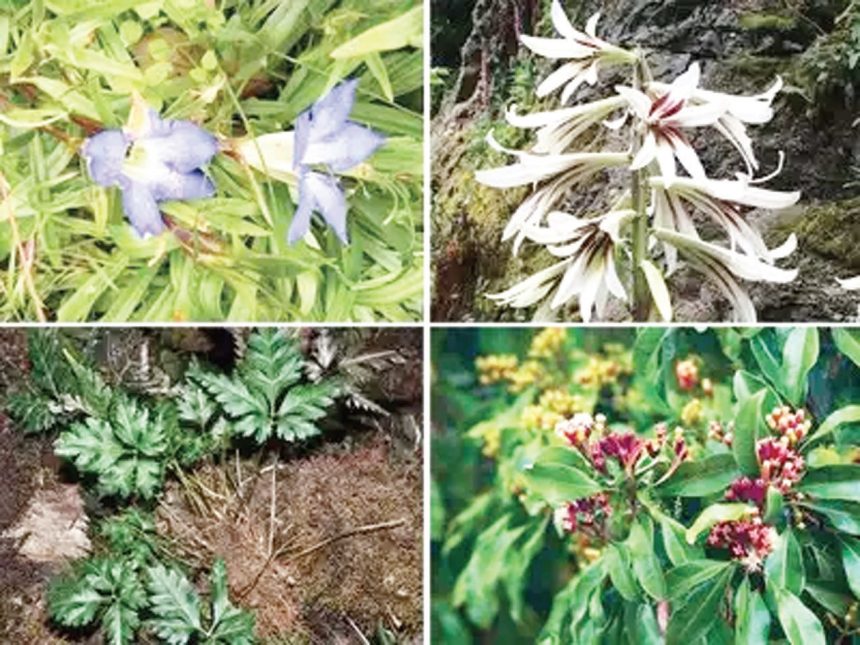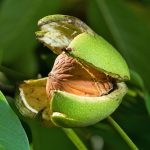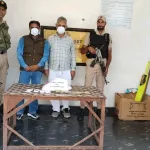Pulwama: The Kashmir Himalayas, known for their stunning beauty, are also a treasure trove of medicinal plants, many of which are now under serious threat. High-altitude species like Saussurea costus, Picrorhiza kurroa, Artemisia spp., Pyrethrum, Hypericum perforatum, and Trillium govanianum have been integral to traditional medicine for centuries. However, unchecked harvesting and environmental degradation are pushing these precious resources toward extinction.
The medicinal value of these plants goes beyond local healing practices.
In recent years, their bioactive properties have attracted significant attention from the global pharmaceutical industry. Yet, this rising demand has become one of the greatest threats to their survival.
According to researchers, about 650 medicinal plant species from the Kashmir Himalayas have long been used in traditional systems of medicine. Extracts and decoctions from these plants have been employed to treat ailments ranging from respiratory infections and colds to burns, pain relief, and digestive issues. Many of these plants also serve as anthelmintics and antispasmodics, making them vital to local healthcare systems.
This ancient knowledge, passed down through generations, emphasizes the integral role these plants play in the daily lives of people.
However, the increasing commercialization of these plants by the modern pharmaceutical industry has led to their overexploitation. Their high demand for pharmaceutical use has caused severe depletion in their natural habitats.
For example, Artemisia absinthium, one of the 20 species of Artemisia found in the Kashmir Himalayas, contains artemisinin, a key compound used in antimalarial drugs. Similarly, Saussurea costus is prized for its benefits in treating arthritis, Picrorhiza for its antipyretic effects, and Podophyllum hexandrum in drug formulations against prostate cancer.
The practice of wild crafting—harvesting plants from the wild without any sustainable management—has become a significant threat to these species.
As demand for these plants rises, so does the rate at which they are disappearing from their natural ecosystems.
Many of these medicinal species are now listed as endangered by the International Union for Conservation of Nature (IUCN). Overgrazing, over-harvesting, grass cutting, landslides, soil erosion, and unplanned developmental activities have exacerbated the situation, pushing these plants closer to extinction.
Researchers are deeply concerned about this decline. The extinction of these species would not only disrupt traditional medicine systems but also have a devastating impact on the ecological balance of the region.
Medicinal plants play a vital role in maintaining biodiversity, and their loss would have cascading effects on the entire ecosystem.
Beyond their medicinal value, these plants are also a crucial source of income for many local communities.
Conservation experts emphasize the significant role they play in the local economy, particularly in the pharmaceutical and therapeutic industries.
“These high-altitude rare plants have tremendous demand in the pharmaceutical industry, where they are processed in their crude form for high-value drugs and products,” experts say.
Yet, the current extraction practices are unsustainable. Without immediate intervention, the rich biodiversity of the Kashmir Himalayas could be irreversibly damaged.
Experts are calling for a comprehensive conservation plan to protect these endangered plants. Such a plan would need to combine conservation efforts with sustainable cultivation to ensure the survival of these species.
“If a parallel conservation programme is not implemented, these valued plants will face extinction,” they warn.
One of the proposed solutions is to maintain a germplasm of these endangered species under cultivated conditions. This involves bringing rare plant species from different ecological niches in the Kashmir Himalayas and consolidating them in controlled environments.
Experts have also suggested developing biodiversity parks where endangered and rare plants can be domesticated and studied for their potential medicinal uses.
This would allow researchers to explore ways to cultivate these plants sustainably and protect them from the growing pressures of commercial exploitation.
The medicinal plants of the Kashmir Himalayas are not only an essential part of the region’s cultural heritage but also hold immense potential for modern medicine.
However, their existence is now under threat due to environmental degradation and unsustainable harvesting practices.
Immediate conservation efforts are required to save these valuable species and protect the biodiversity of the Kashmir Himalayas for future generations.







